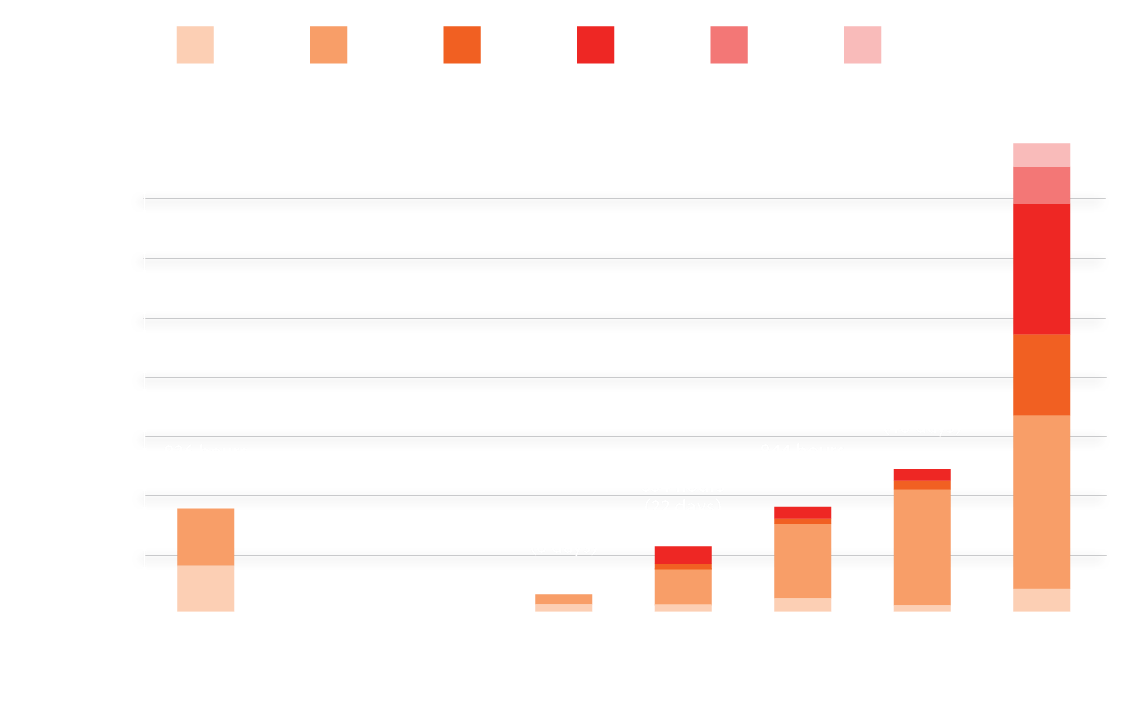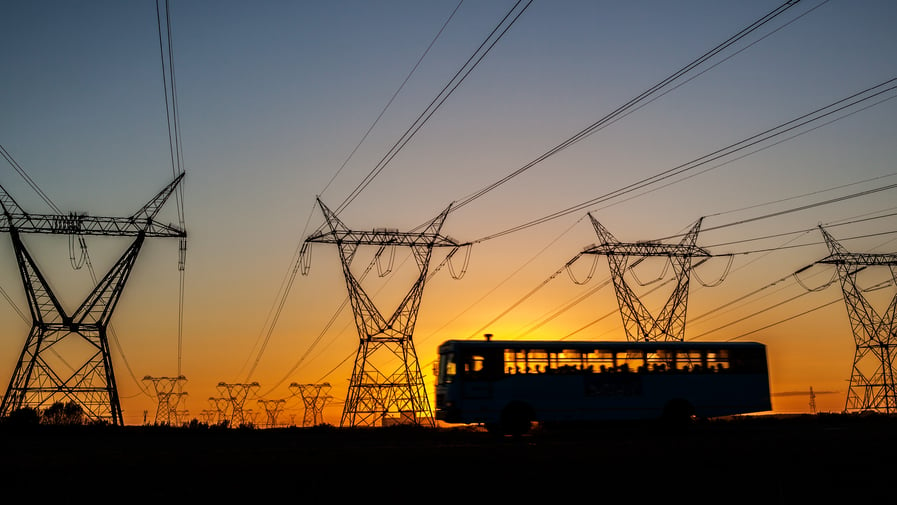The escalating energy crisis in South Africa has far-reaching consequences beyond the lengthening daily power outages. Tamsin Hunt investigates how electricity shortages, coupled with tariff increases, will drive civil unrest risks over the coming year.
South Africa’s beleaguered state-owned electricity producer, Eskom, has struggled to keep the lights on since 2007. A complex combination of issues relating to old and poorly built infrastructure, mismanagement, and decades’ worth of corruption has resulted in a fragile electricity grid that cannot support the demands of one of the largest economies in Africa. For 16 years, Eskom has sporadically implemented what is locally known as ‘loadshedding’ - scheduled and tiered blackouts designed to prevent the power grid from collapse when demand outstrips supply. At the worst tier experienced so far – Stage Six – South Africans must contend with blackouts for between eight to 10 hours a day. The problem has unquestionably deepened in recent years due to troubles ranging from frequent breakdowns and insufficient coal supply through to allegations of sabotage, leading to the cumulative length of power outages increasing by a staggering three times in 2022 compared to the year before, and public frustration has grown with every escalation.
To make matters worse, Eskom and the National Energy Regulator of South Africa (NERSA) have embarked on a plan to hike electricity tariffs annually from April 2021 to April 2024, to mitigate increasing energy costs, a high debt burden, and carbon taxes. In April 2023 alone, electricity prices will increase by 18.65 percent, and by a further 12.74 percent in April 2024. While other countries have sought to shield businesses from such necessary hikes, South Africa has – and is – increasing costs for both businesses and domestic households alike. Although Eskom’s reasoning may be sound, and the additional funds desperately needed, the combination of prolonged blackouts and tariff hikes has had a severe effect on the economy by reducing business hours,
while at the same time increasing operational costs. Moreover, the rising cost of living and ongoing outages have significantly elevated levels of frustration and grievances with the government, driving multiple protests in recent months, organised by both civil society and political groups.

Source: EskomSePush, an independent third party that reports on and tracks loadshedding in South Africa. Loadshedding figures sometimes vary according to the recording methodologies used by the reporting organisation. As municipalities are responsible for implementing the loadshedding for the national electricity producer, reporting organisations, including Eskom, must make assumptions relating to whether the outage was implemented for the full period or not. |
Too little, too late?
On 9 February, South African President Cyril Ramaphosa announced a national state of disaster in order to unlock funds for critical maintenance and cut regulatory red tape. The government insists that the problem will be resolved within the next 12 to 18 months by fast-tracking repairs, approving renewable energy projects, and enabling both commercial and private producers to add electricity to the national grid. But this is not the first time the government has made promises to resolve the problems at Eskom, and bring an end to loadshedding since it began in 2007, and thus far there has been little in the way of an effective remedy.
The South African Reserve Bank (SARB) estimates that loadshedding costs the country approximately USD 51 million per day, and SARB has revised its growth forecast for 2023 from 1.1 to 0.3 percent in response. While small businesses contribute a crucial third of the country’s GDP, they are also the hardest hit by loadshedding, unable to afford energy alternatives such as generators and solar power. In 2022, a total of 1,907 businesses closed their doors, and in December 2022 alone, 159 businesses liquidated, up by 30.3 percent compared to December 2021. The sector most affected by closures in 2022 were the finance, insurance and real estate sectors, followed by trade, catering and accommodation. 94 construction companies and 69 manufacturers also closed. For a large part, the reason for the jump can be attributed to limited business operating hours due to power outages, and as people tighten their belts on items such as insurance, holidays, real estate and construction. These are closures that South Africa can ill afford with unemployment levels already the third highest in the world, at 32.9 percent of the population as at November 2022.
With loadshedding impacting almost every aspect of residents’ lives, public anger, and by corollary protest activity, is on the rise."
Moreover, a deteriorating energy supply will impact food security in South Africa. Major local food manufacturers and farmers have raised the alarm over interrupted production due to loadshedding, contributing to food inflation rising to 13.4 percent in January, the highest in almost 14 years. Prolonged power outages are hampering every stage of production, from field irrigation and industrial farming machines, to manufacturing operations and distribution logistics. Higher food prices, electricity tariff increases, and high global fuel costs will exacerbate already high inflation, further diminishing the purchasing power of ordinary citizens. For a country that has long expressed its grievances through protest action, the lengthening list of grievances will not bode well for civil unrest risks in South Africa in the year ahead.
The inevitability of protests
With loadshedding impacting almost every aspect of residents’ lives, public anger, and by corollary protest activity, is on the rise. In one of the largest demonstrations in recent months, thousands took to the streets in Johannesburg and Cape Town on 25 January 2023 to denounce the escalating energy crisis, organised by the main opposition party, the Democratic Alliance. Additionally, civil society groups have organised several rallies at government, Eskom and NERSA locations in recent weeks, denouncing both loadshedding and electricity hikes. Meanwhile, in November 2022, and again in January 2023, protests against (unplanned) power outages – exacerbated and prolonged by scheduled loadshedding – turned violent in Vosman, Mpumulanga. One woman was shot and killed in the November protest, allegedly by police live fire, while protesters looted shops and businesses and set vehicles on fire.
Civil unrest in context
South Africa has a long history of large-scale protests that sometimes end in violence. Demonstrations are driven by a range of issues, but most frequently are linked to grievances over a lack of access to basic services, political affiliations, and the enduring social and economic inequality in the country. One of the most violent episodes in the country’s democratic past was the Marikana miners' strike in August 2012 when police opened live fire on protesters, killing 34 people. More recently in July 2021, thousands joined violent riots in Gauteng and Kwa-Zulu Natal provinces, sparked by the arrest of former president Jacob Zuma on corruption charges but quickly adopting much broader grievances. More than 350 people were killed in the violence, and the riots cost the economy millions of US dollars due to the looting and destruction of hundreds of businesses.
With latest government promises to address the crisis proving too little too late, South Africans must face at least another year of worsening power outages. SARB projects 250 days of loadshedding for 2023 – which would be the highest on record – followed by 150 in 2024; Eskom has forecast that loadshedding will continue until 2027.
The deteriorating energy crisis could not come at a more difficult time for the governing African National Congress (ANC), with national elections around the corner in 2024. Opposition political parties will likely exploit the current crisis to drum up support, driving political rallies and further protests in the coming months. As such, the forecast for both economic growth and civil unrest risks in 2023 looks bleak. But, many will look to the state of disaster declaration and promises of renewable energy and reforms to the sector to provide a glimmer of hope that South Africa just might have the impetus and resources required to resolve the energy crisis at last in the years to come.




